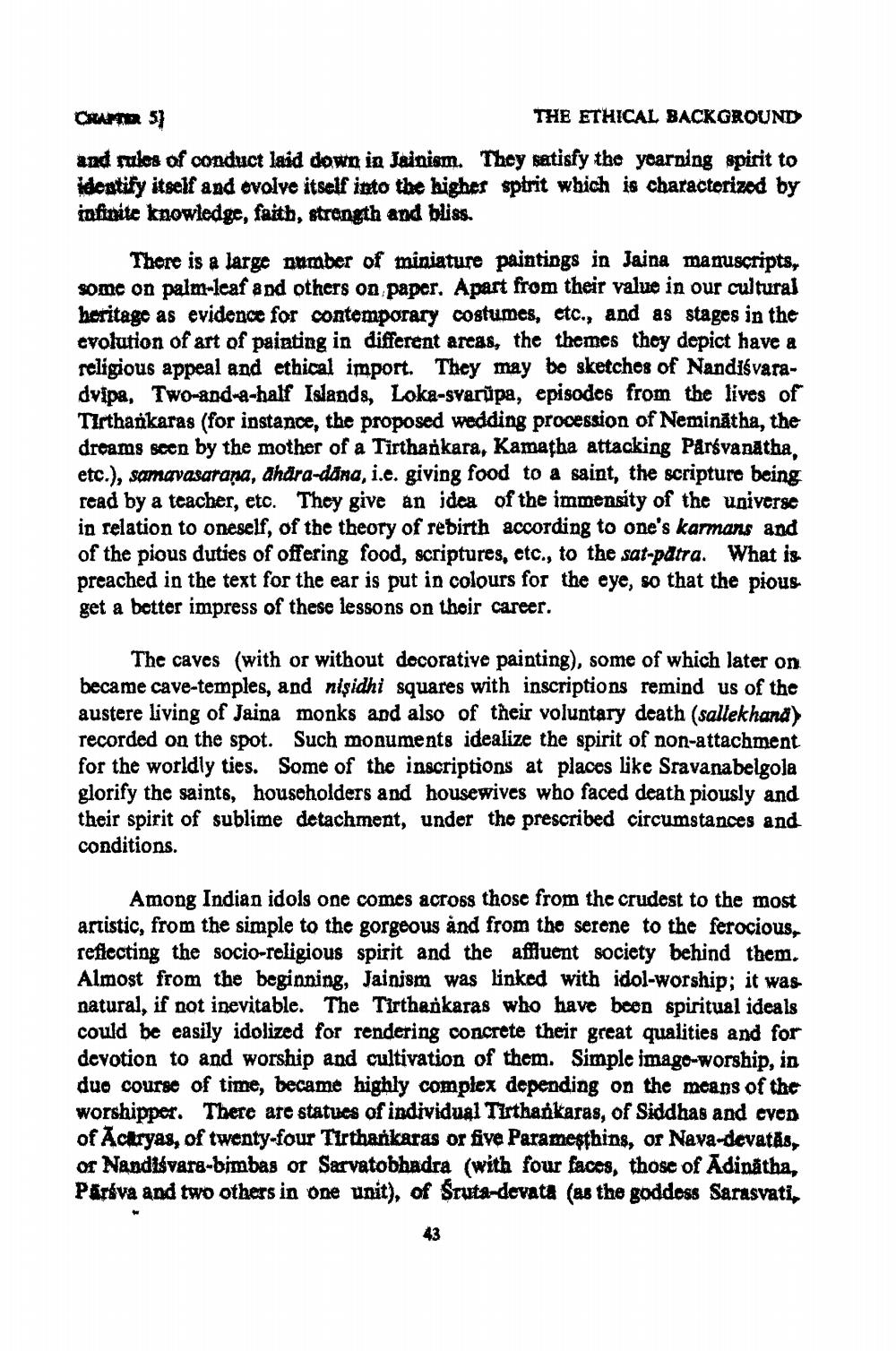________________
CHAPTER 5]
THE ETHICAL BACKGROUND
and rules of conduct laid down in Jainism. They satisfy the yearning spirit to identify itself and evolve itself into the higher spirit which is characterized by infinite knowledge, faith, strength and bliss.
There is a large number of miniature paintings in Jaina manuscripts, some on palm-leaf and others on paper. Apart from their value in our cultural heritage as evidence for contemporary costumes, etc., and as stages in the evolution of art of painting in different areas, the themes they depict have a religious appeal and ethical import. They may be sketches of Nandisvaradvipa, Two-and-a-half Islands, Loka-svarupa, episodes from the lives of Tirthankaras (for instance, the proposed wedding procession of Neminatha, the dreams seen by the mother of a Tirthankara, Kamatha attacking Parsvanatha, etc.), samavasaraṇa, āhāra-dāna, i.e. giving food to a saint, the scripture being read by a teacher, etc. They give an idea of the immensity of the universe in relation to oneself, of the theory of rebirth according to one's karmans and of the pious duties of offering food, scriptures, etc., to the sat-patra. What is preached in the text for the ear is put in colours for the eye, so that the pious get a better impress of these lessons on their career.
The caves (with or without decorative painting), some of which later on became cave-temples, and nișidhi squares with inscriptions remind us of the austere living of Jaina monks and also of their voluntary death (sallekhand) recorded on the spot. Such monuments idealize the spirit of non-attachment for the worldly ties. Some of the inscriptions at places like Sravanabelgola glorify the saints, householders and housewives who faced death piously and their spirit of sublime detachment, under the prescribed circumstances and conditions.
Among Indian idols one comes across those from the crudest to the most artistic, from the simple to the gorgeous and from the serene to the ferocious, reflecting the socio-religious spirit and the affluent society behind them. Almost from the beginning, Jainism was linked with idol-worship; it wasnatural, if not inevitable. The Tirthankaras who have been spiritual ideals could be easily idolized for rendering concrete their great qualities and for devotion to and worship and cultivation of them. Simple image-worship, in due course of time, became highly complex depending on the means of the worshipper. There are statues of individual Tirthankaras, of Siddhas and even of Acaryas, of twenty-four Tirthankaras or five Parameşthins, or Nava-devatās, or Nandisvara-bimbas or Sarvatobhadra (with four faces, those of Adinatha, Päriva and two others in one unit), of Sruta-devata (as the goddess Sarasvati,
43




